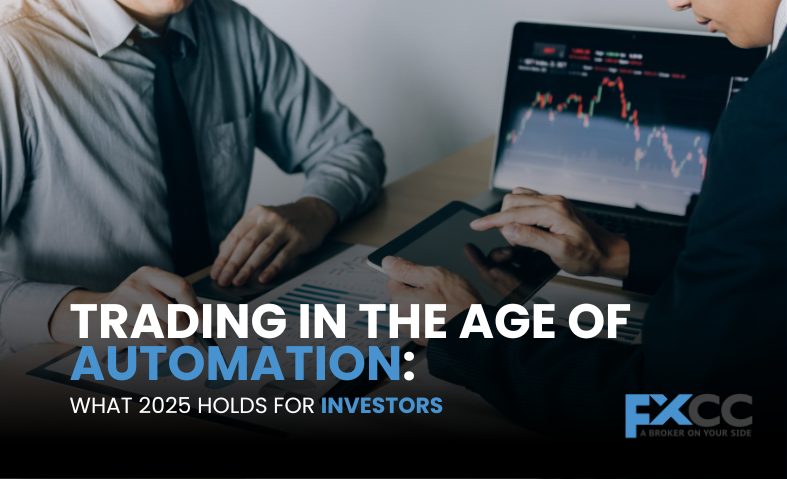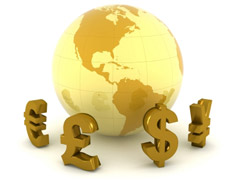The world of stock trading is undergoing a dramatic transformation, and by 2025, automation will be at the core of this evolution. From artificial intelligence (AI) to advanced algorithms, technology is redefining how investors interact with the markets. For both experienced traders and beginners, understanding these changes is essential to staying competitive. Here’s a look at what the future holds for trading in the age of automation.
The Dominance of AI in Trading
By 2025, AI will no longer be a futuristic concept but a fundamental part of trading. AI-powered tools will analyze massive amounts of data in real-time, uncovering patterns and trends that human analysts might overlook. These systems will not only predict market movements but also execute trades with unmatched speed and accuracy. For individual investors, this means gaining access to insights that were once exclusive to institutional players.

However, the rise of AI also brings challenges. Smaller investors may struggle to compete with large firms that have access to more sophisticated technology. The key to leveling the playing field lies in the democratization of AI tools. Platforms offering affordable, user-friendly AI solutions could empower everyday investors, giving them a fair chance to succeed.
The Growing Role of Algorithmic Trading
Algorithmic trading, or algo-trading, is already a major force in the markets, and by 2025, it will become even more prevalent. These algorithms follow predefined rules to execute trades automatically, often in milliseconds. For example, an algorithm might buy a stock when it reaches a specific price or sell when a certain indicator signals a downturn.
The advantage of algo-trading is its ability to eliminate emotional decision-making. Fear and greed often lead to poor trading choices, but algorithms stick to the plan without hesitation. For investors, this means more disciplined and consistent trading. However, it’s crucial to understand how these algorithms work. Relying on them blindly without knowing their logic could lead to unexpected losses.
Big Data: The New Frontier
Big data is another factor reshaping the trading landscape. By 2025, the sheer volume of data generated by markets, social media, and global events will be overwhelming. Automated systems will analyze this data to uncover hidden opportunities. For instance, sentiment analysis tools will scan social media platforms to gauge public opinion about a company, providing early signals for potential stock movements.
For investors, this means more informed decision-making. However, it also requires a shift in mindset. Traditional methods of analyzing financial statements and market trends will need to be complemented with data analytics skills. Investors who can harness the power of big data will have a significant advantage in the markets.
The Emergence of Decentralized Finance (DeFi)
Decentralized finance, or DeFi, is another trend that will shape trading in 2025. Built on blockchain technology, DeFi platforms allow users to trade, lend, and borrow without intermediaries like banks or brokers. This opens up new opportunities, especially for investors in emerging markets where traditional financial systems are less accessible.
However, DeFi is not without risks. The lack of regulation and the potential for fraud are significant concerns. Investors will need to approach DeFi with caution, ensuring they understand the technology and the platforms they use. Despite these challenges, DeFi represents a bold new frontier in trading, offering greater transparency and control.
The Human Element in an Automated World
While automation is transforming trading, the human touch will remain indispensable. Technology can analyze data and execute trades, but it cannot replicate human intuition and creativity. Investors will still need to set goals, assess risks, and make strategic decisions. Automation should be seen as a tool to enhance human capabilities, not replace them.
Ethical considerations will also play a growing role. As algorithms and AI systems make more decisions, questions about accountability and bias will arise. Investors and regulators alike will need to ensure that these technologies are used responsibly and transparently.
Preparing for the Future of Trading
So, how can investors prepare for the age of automation? First, embrace technology. Familiarize yourself with AI tools, algorithmic trading platforms, and data analytics. Many of these resources are becoming more accessible, so take advantage of them.
Second, focus on education. The trading landscape is changing rapidly, and staying informed is key. Attend webinars, read industry reports, and follow thought leaders to keep up with the latest trends.
Finally, maintain a balanced approach. While automation offers incredible opportunities, it’s important not to lose sight of the fundamentals. Diversify your portfolio, manage risk, and stay disciplined.

By 2025, automation will redefine stock trading, offering investors powerful tools to navigate the markets. AI, algorithms, big data, and DeFi will create new opportunities but also new challenges. Success will depend on how well investors adapt to these changes, combining technology with human insight. The future of trading is automated, but the human element will always matter. Stay informed, stay adaptable, and embrace the future with confidence.


